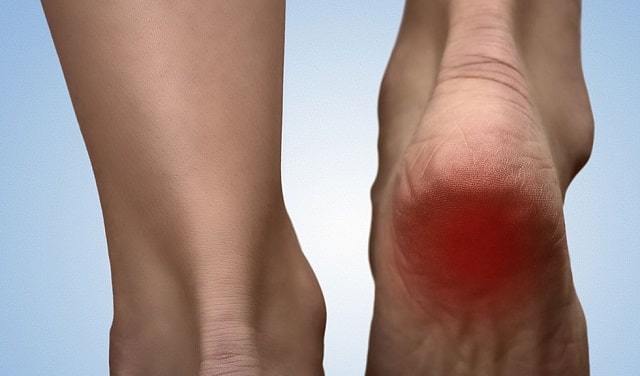Your foot has up to 26 bones. You have 33 joints and over 100 tendons. Of all the foot bones, the heel is the largest. Sometimes you may experience heel pain due to overworking it or as a result of an injury. This pain can range from little to disabling. It is recommended that when you are experiencing heel pain, you look for a New York heel pain specialist or a podiatrist to diagnose it if home remedies do not seem to ease the pain. Most often, heel pain is caused by plantar fasciitis. At times, this condition is also referred to as heel spur syndrome when a spur is involved. Heel pain can result from a stress fracture, arthritis, tendonitis, nerve irritation, or sometimes a cyst. Since there are many other causes of heel pain, there is the need to have it properly diagnosed.
Causes Of Heel Pain
The most common cause of heel pain is related to the structure of your foot. For instance, most people with problems with their arches, either high or flat-arched feet, are more susceptible to heel pain. If you put on non-supportive footwear on flat and hard surfaces, these surfaces will likely put abnormal strain on the plantar fascia, leading to heel pain. People whose job requires long hours on their feet are particularly prone to this pain. Other causes include obesity and overuse.
Sprains and strains can also cause plantar fasciitis. These are injuries to the body that often result from physical activities. Such injuries are common. They can range from minor injuries to severe ones depending on the incident. Fractures, on the other hand, can also lead to this condition. Fractures are considered a medical emergency, thus require urgent care.
Bursitis also may bring about this pain. These are sacs full of fluid that are located in your joints. Bursae usually surround the area where the skin, muscle tissues, and tendons meet the bone. Another cause of the pain is ankylosing spondylitis, a variant of arthritis that affects the spine. Ankylosing spondylitis leads to severe inflammation of the vertebrae and eventually may lead to chronic pain and disability.
Also, osteochondroses are another culprit for heel pain. The disorders tamper with the growth of bones among children as well as adolescents. Then there is reactive arthritis, which is an infection that can cause arthritis.
Signs And Symptoms
The following are signs and symptoms of heel pain:
● Experiencing pain in the arch of your foot
● Pain on the bottom of your heel
● Pain on your heels that increases for months
● Having the bottom of your heel swelling
● Pain that gets worse when you arise
It Is Time To Seek Medical Attention
If you develop this pain, it is advisable first to try home remedies such as resting. Resting eases these symptoms. However, when all the remedies fail to provide relief from pain, you should seek medical attention within three weeks. At Precision Footcare, board-certified podiatrist John Jurcisin, DPM, ABPS, FACFAS, will diagnose and treat heel pain and other conditions such as Achilles tendonitis and plantar fasciitis.

